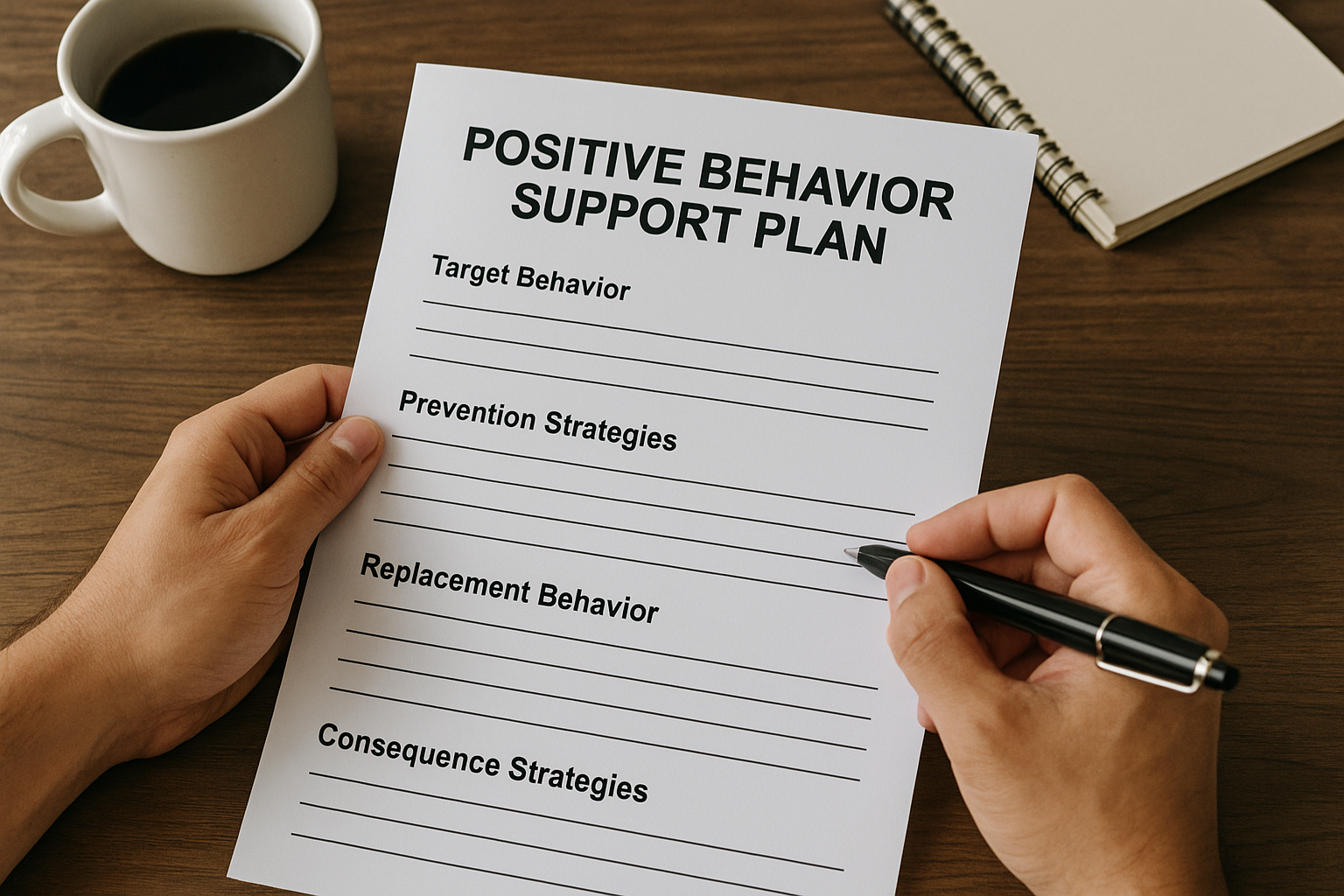
Positive Behaviour Support Plans
An interactive guide to understanding and creating effective plans for positive growth and support.
What is a Positive Behaviour Support Plan?
This section introduces the core concept of Positive Behaviour Support . It explains why creating a supportive environment is crucial for individuals with challenging behaviours and how these plans provide the structure needed for them to thrive. Use this to grasp the foundational philosophy behind PBSPs.
📋 Overview
PBSPs are proactive and person-centred frameworks designed to understand the reasons behind an individual's challenging behaviours. Rather than just reacting to behaviours, they focus on teaching new skills and making environmental changes to improve quality of life and reduce the occurrence of these behaviours.
🎯 Goals of the Plan
The primary goal is not to control the individual, but to support them. This includes improving their communication skills, building positive relationships, increasing their participation in the community, and teaching them alternative, more effective ways to meet their needs, ultimately promoting positive, long-term behavioural change.
The Four Pillars of a PBSP
A Positive Behaviour Support Plan is built upon four key components that work together to create a holistic and effective strategy. Click on each component below to learn more about its role in the process.
1. Assessment
2. Proactive Strategies
3. Constructive Methods
4. Implementation & Monitoring
Who Benefits from a PBSP?
PBSPs are versatile tools that offer significant benefits to a wide range of people. This isn't just about the individual with challenging behaviours; it's about strengthening their entire support system. Explore the groups below to understand the wide-reaching positive impact.
🧩 Individuals with Developmental Disabilities
Helps understand unique needs and addresses communication or social challenges in a supportive manner (e.g., Autism, Down syndrome).
🧠 Those with Mental Health Conditions
Provides a structured approach to manage behaviours related to anxiety, depression, or other conditions, promoting overall wellness.
🚶♀️ Persons with Neurological Issues
Assists in creating understanding and support strategies for behavioural changes resulting from brain injuries or neurodegenerative diseases.
👧👦 Children and Adolescents
Supports educational and social goals by promoting positive behaviour in learning environments and at home.
🔄 Individuals Facing Life Transitions
Offers strategies to ease difficult transitions like changing schools or homes, promoting adaptive and positive responses.
👨👩👧👦 Families and Caregivers
Provides families with effective strategies, reducing stress and strengthening the entire support network through shared understanding and goals.
PBSP vs. BSP: Understanding the Difference
While both plans aim to support positive behaviour, they have different focuses and structures. The chart below gives a high-level visual comparison of their core philosophies, while the table provides a detailed breakdown. This helps in choosing the right type of plan for specific needs.
| Feature | Positive Behaviour Support Plan (PBSP) | Behaviour Support Plan (BSP) |
|---|---|---|
| Focus | Holistic and proactive. Aims to improve quality of life by teaching skills and understanding the 'why' behind behaviour. | More structured and can be reactive. Specifically targets behaviours of concern. |
| Approach | Person-centred, long-term, and focuses on making environmental changes to prevent behaviours. | Can be short-term (Interim) to manage immediate risks, or long-term (Comprehensive) for holistic change. |
| Key Components | Functional Behaviour Assessment (FBA), hypothesis development, skill-building strategies, and constant evaluation. | Can include regulated practices for safety. The comprehensive version is based on an FBA, similar to a PBSP. |
Creating Your Own Plan
Ready to begin? Crafting a personalised plan is a collaborative process. This section provides a starting point and highlights the importance of professional involvement to ensure the plan is effective, safe, and tailored to the individual's needs.
Getting Started: Key Questions
-
1.
Who is the individual? Describe their strengths, interests, communication style, and needs.
-
2.
What is the behaviour of concern? Describe exactly what it looks like, how often it happens, and its intensity.
-
3.
Why might the behaviour be happening? Consider what happens before and after. What need is the behaviour meeting (e.g., getting attention, escaping a task)?
-
4.
What new skills can be taught? Identify a positive replacement behaviour that meets the same need (e.g., teaching them to ask for a break instead of running away).
Involving Professionals
Creating a PBSP is not a journey to take alone. Involving professionals is crucial for a successful outcome.
Why it's beneficial:
- Expertise: Behaviour specialists and healthcare professionals have the training to conduct thorough assessments (like an FBA).
- Objectivity: An outside perspective can help identify patterns or functions of behaviour that may not be obvious to family.
- Resource Access: They can connect you with community resources, therapies, and other support networks.
- Safety and Ethics: They ensure the plan is ethical, respects the individual's rights, and avoids any harmful strategies.
Always collaborate with a qualified PBS practitioner to develop and implement a comprehensive plan.
Want to know more
Reach out to our team to know more about Positive Behaviour Support services, supervision, training or job opportunities?
Contact Us
